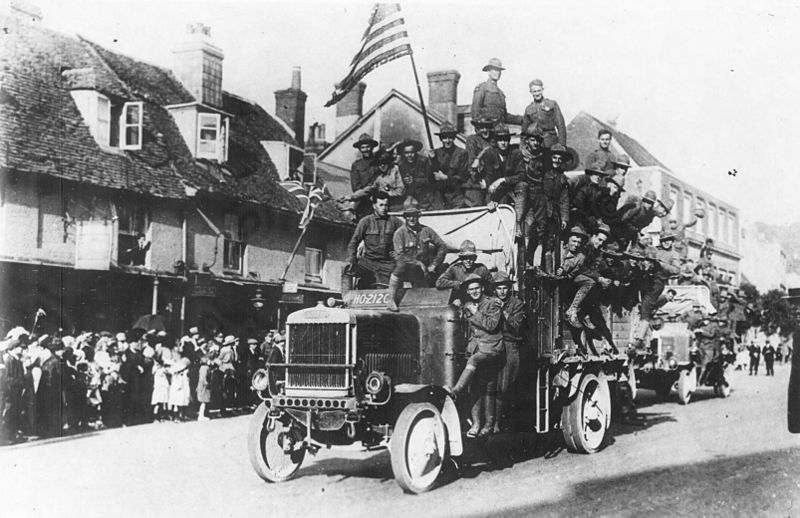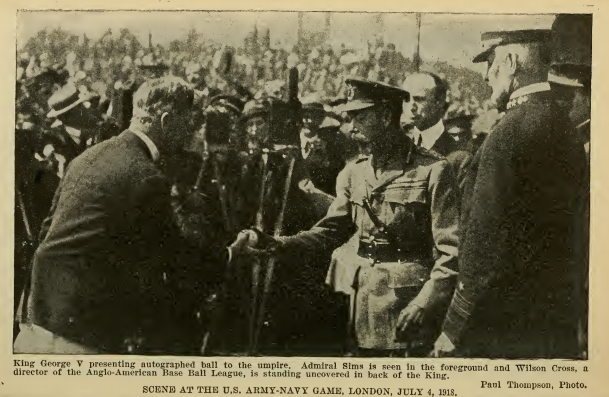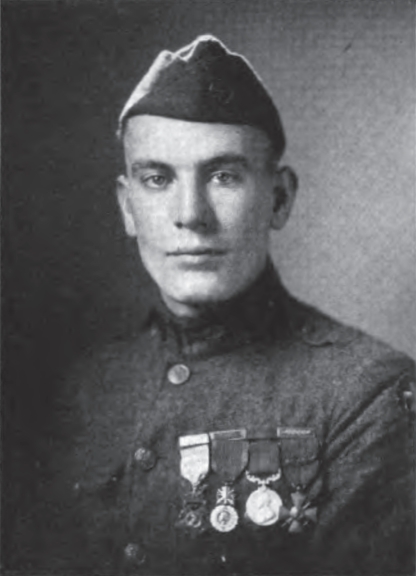Independence Day, 1918
A hundred years ago today, tens of thousands of Americans were spending Independence Day somewhere the leaders of the Revolution could scarcely have believed – British Army training camps in France.
Major Leland B. Garretson of the 80th Division described it in a letter home three days later:
On the Fourth of July the whole of France and England made a gala day of it, and it was indeed a curious privilege to be in a British Army Service School and hear British officers toasting the United States for the courage it showed a hundred and fifty years ago in insisting on personal liberty, and fighting a mad German Prince to get it. It may be said to the Britons’ credit, there was never a word of regret about lost territory or anything of the sort, which was quite remarkable when you think of the Britons’ love for empires beyond the seas



Not all the Doughboys had such a convivial time that day. At their closest point to the vital Allied communications center of Amiens, German lines sat on a ridge topped by the village of Hamel and General Sir John Monash, commander of the Australians holding the line here, had picked July 4th as the day he was going to remove the Germans from the ridge. Among his force, would be four newly trained companies of the U.S. 33rd Division of National Guardsmen.
Tactics had come a long way since the frontal infantry assaults of 1914 to 1916. For the previous two weeks, the Allies had bombarded German lines at exactly the same time in the early hours of each morning. When the guns opened fire on July 4th, the Germans expected more of the same. Instead, at 3:10am, ten Australian and four American infantry battalions with five companies of British tanks attacked on a three and a half mile front aiming for a penetration of a mile and a half. Aircraft of the newly formed Royal Air Force buzzed low overhead to mask the sound of the advancing tanks. As the infantry closed on the German positions, the British artillery shortened its range to deliver a ‘creeping barrage’, carefully coordinated to keep pace with the infantry and tanks, hitting whatever was just in front of them. Many Germans were taken by surprise, still wearing their gas masks. Where resistance was offered, the tanks closed in to overwhelm it. Within 93 minutes – three behind schedule – all the Allied objectives had been taken. As the Australians and Americans dug in to fight off counter-attacks, the RAF flew up to drop supplies to the forward units. J.F.C Fuller, one of the architects of armored warfare, commented that no other battle of the Great War could compare with Le Hamel for rapidity, brevity, and completeness of success.

There were 1,062 Australian casualties (including 800 dead), 13 killed or wounded among the the British tank crews, and 176 American casualties (including between 13 and 26 killed). Around 2,000 Germans were killed and 1,600 captured. A Chicago native, Corporal Thomas Pope, became the first National Guardsman to win the Medal of Honor. As his citation explained:
His company was advancing behind the tanks when it was halted by hostile machine gun fire. Going forward alone, he rushed a machine gun nest, killed several of the crew with his bayonet, and, standing astride his gun, held off the others until reinforcements arrived and captured them.

When asked his opinion of his new American comrades, an Australian veteran is supposed to have said “They play a bit rough; but they’ll learn the rules in time”. Will Judy, another Chicagoan serving with the 33rd Division, wrote:
Companies A and G of the 132nd Infantry marched into our headquarters this morning, dirty, tired and wild-eyed…The men were quiet; they seemed in melancholy; the glory of battle was not on their faces. Every one carried a souvenir – a cap, a button, a badge, a gun captured from the enemy…The battle has historical importance for I believe it is the first time American troops fought side by side with their enemy of our own revolutionary days, the British.
In the century since the Battle of Hamel, the United States, Britain, and their allies went on to face down the great twin evils of the twentieth century: Nazism and Communism. This alliance has been tested and, at times, squandered on adventures of questionable merit. Today marks the anniversary of the separation of Britain and what would become the United States. But when those American Doughboys and British Tommies were toasting the Declaration of Independence 100 years ago, they were ushering into being one of the greatest forces for good the world has known.
John Phelan is an economist at the Center of the American Experiment.